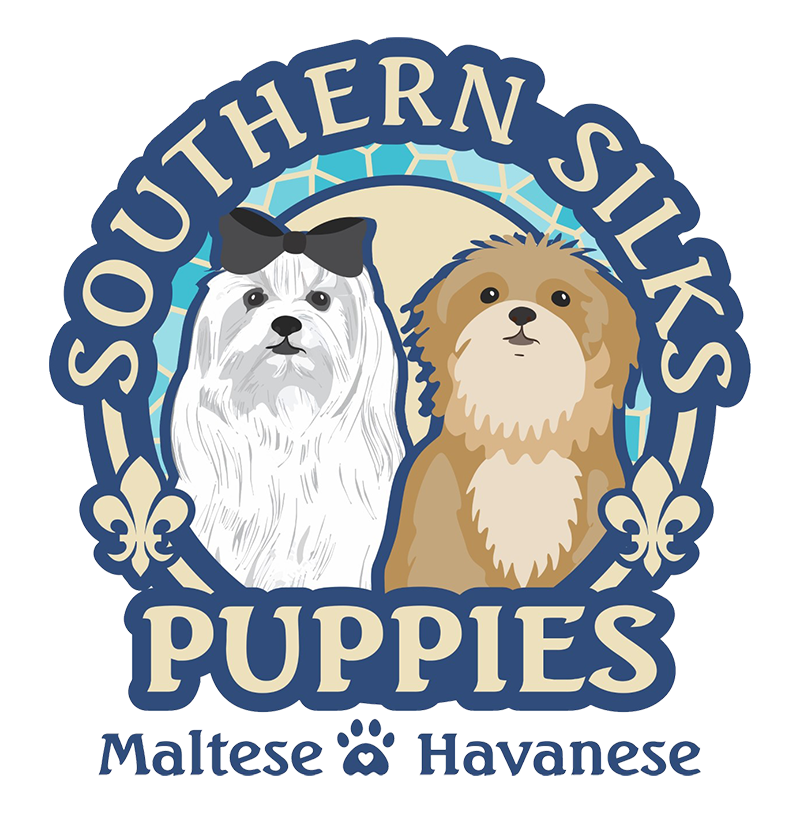Follow Us x
Pronunciation: Mall-TESE Group: Toy Group
Average Weight 4-7 pounds>
Life Expectancy About 12 - 15 years
Description: A Maltese is a small breed of white dog that does not shed.
Temperament: Maltese can be very energetic and are known for their occasional wild outbursts of physical activity, running around in circles chasing their tail, and bolting at top speed with amazing agility; given this, they still do well for apartment dwellers. They are relatively easy to train and enjoy a playful game of fetch. These intelligent dogs learn quickly, and pick up new tricks and behaviors easily. Since they were bred specifically for companionship, they do not do well being left alone for long hours.
Grooming: Daily combing and brushing of the long coat is important but be gentle, as the coat is very soft. Clean the eyes daily to prevent staining, and clean the beard after meals for the same reason. Bathe or dry shampoo regularly - making sure the animal is thoroughly dry and warm afterward. Clean the ears, and pull out hair growing inside the ear canal.
Origin:
This ancient dog was described by the Greek philosopher Theophrastus as belonging to the "Melita" breed, an archaic name for Malta. It was developed in Italy with the addition of miniature spaniel and poodle blood. It was thought that these lively little dogs were first brought to England by Crusaders returning home from the Mediterranean. The breed became particularly popular with women, who often carried them in their sleeves and even to their beds. The dog was not only popular with women though. Publius, the Roman governor of Malta, prized his Maltese enough to commission a portrait of "Issa" and even have poetry written about her. Today, the glamorous Maltese is an adored pet and sought-after show dog.
Male vs Female Maltese
Most new dog owners have different reasons for why they choose to get a dog. For some, looking for a companion might be an important aspect. Others think they’ll become more active if they get a dog. And some people just need a sense of purpose.
So if you’re looking for a sweet, intelligent dog who is devoted to its owners? You are in the right place. The Maltese is perfect for you. Maltese assume that everyone they meet – human or animal – are a friend.
If you are wrestling with the final decision of whether you should choose a male or female Maltese, stay with us! In some ways, choosing between male and female dogs is a matter of personal preference. However, some traits are common in females, and others common in males. It is important to evaluate them and determine which gender would fit in best with your home situation when you choose a puppy. In appearance, differences between male and female Maltese are not very obvious. If bred properly, they are hard to tell apart by size, looks and health.
In the context of male vs. female Maltese temperament, one thing is worth emphasizing – alpha behavior is basically the deciding factor in choosing a puppy. Contrary to what you might think, a male Maltese is NOT likely to exhibit alpha behavior more than a female Maltese. Actions like raising one leg to pee in an attempt to mark territory, humping, and getting involved in territorial fights are all examples of alpha behavior, and these characteristics are generally more predominant in females toys. A dog is considered a toy by the experts as 15 adult lbs and under.
A lot of people think that they want a ‘sweet girl.’ They believe that female dogs are more docile and attentive and do not fight for dominance. This could not be further from the truth! In the canine world, female toys are at the top of the hierarchy for alpha characteristics. As a result, a female Maltese is prone to being territorial, defensive, more stubborn, and independent than her male counterparts. Females are more likely to display alpha behaviors like humping, raising their legs to pee, or getting into fights. The chance that you’ll find two female dogs fighting is higher than that of males. Two cooks in the kitchen is not usually a good idea. For these reasons and others, most breeders will advise you not to get two females, but there’s nothing wrong with getting two boys if you want more than one companion.
Why the price difference? Male Maltese are less expensive than female Maltese as in the Maltese breed males generally outnumber females 4 to 1. If you can find a really quality female, which is what you want of course, that’s rare and usually a long wait list. In many cases, the price difference could be as much as a thousand dollars. Also, because of the general misconception of marking etc, hovering around male toys, they are not in as high demand as female Maltese, and this contributes to the lower male price. Most Breeders, especially show breeders, will keep the females for their breeding program or to trade w other show breeders for new blood lines.
If you want a more socially confident, reliable, and less moody dog who is, at the same time, more outgoing and accepting of new people and other dogs, as well, then a male Maltese should be your choice.
Basically, bottom line is, gender is really an individual ‘thingie’. This is where your breeder comes in. She should know her pups and can describe personality, individual differences and characteristics in detail so you can make an informed decision as to if this pup fits your needs and wants! So Whatever gender you decide to get, make sure it makes you happy, and that puppy ‘touches your heart’. And remember – a bow looks just as good on a male Maltese as it does on a female.
AKC Standard for Maltese Breed
Akc Maltese Puppies
AKC Maltese Breed and Traits (Follow this link to learn more about the Maltese Breed via the AKC description.)
General Appearance: The Maltese is a toy dog covered from head to foot with a mantle of long,
silky, white hair. He is gentle-mannered and affectionate, eager and sprightly in action, and,
despite his size, possessed of the vigor needed for the satisfactory companion.
Head: Of medium length and in proportion to the size of the dog. The skull is slightly rounded
on top, the stop moderate. The drop ears are rather low set and heavily feathered with long hair
that hangs close to the head. Eyes are set not too far apart; they are very dark and round, their
black rims enhancing the gentle yet alert expression. The muzzle is of medium length, fine and
tapered but not snipy. The nose is black. The teeth meet in an even, edge-to-edge bite, or in a
scissors bite.
Neck: Sufficient length of neck is desirable as promoting a high carriage of the head.
Body: Compact, the height from the withers to the ground equaling the length from the withers
to the root of the tail. Shoulder blades are sloping, the elbows well knit and held close to the
body. The back is level in topline, the ribs well sprung. The chest is fairly deep, the loins taut,
strong, and just slightly tucked up underneath.
Tail: A long-haired plume carried gracefully over the back, its tip lying to the side over the
quarter.
Legs and Feet: Legs are fine-boned and nicely feathered. Forelegs are straight, their pastern
joints well knit and devoid of appreciable bend. Hind legs are strong and moderately angulated at
stifles and hocks. The feet are small and round, with toe pads black. Scraggly hairs on the feet
may be trimmed to give a neater appearance.
Coat and Color: The coat is single, that is, without undercoat. It hangs long, flat, and silky over
the sides of the body almost, if not quite, to the ground. The long head-hair may be tied up in a
topknot or it may be left hanging. Any suggestion of kinkiness, curliness, or woolly texture is
objectionable. Color, pure white. Light tan or lemon on the ears is permissible, but not desirable.
Size: Weight under 7 pounds, with from 4 to 6 pounds preferred. Overall quality is to be favored
over size.
Gait: The Maltese moves with a jaunty, smooth, flowing gait. Viewed from the side, he gives an
impression of rapid movement, size considered. In the stride, the forelegs reach straight and free
from the shoulders, with elbows close. Hind legs to move in a straight line. Cowhocks or any
suggestion of hind leg toeing in or out are faults.
Temperament: For all his diminutive size, the Maltese seems to be without fear. His trust and
affectionate responsiveness are very appealing. He is among the gentlest mannered of all little
dogs, yet he is lively and playful as well as vigorous.


